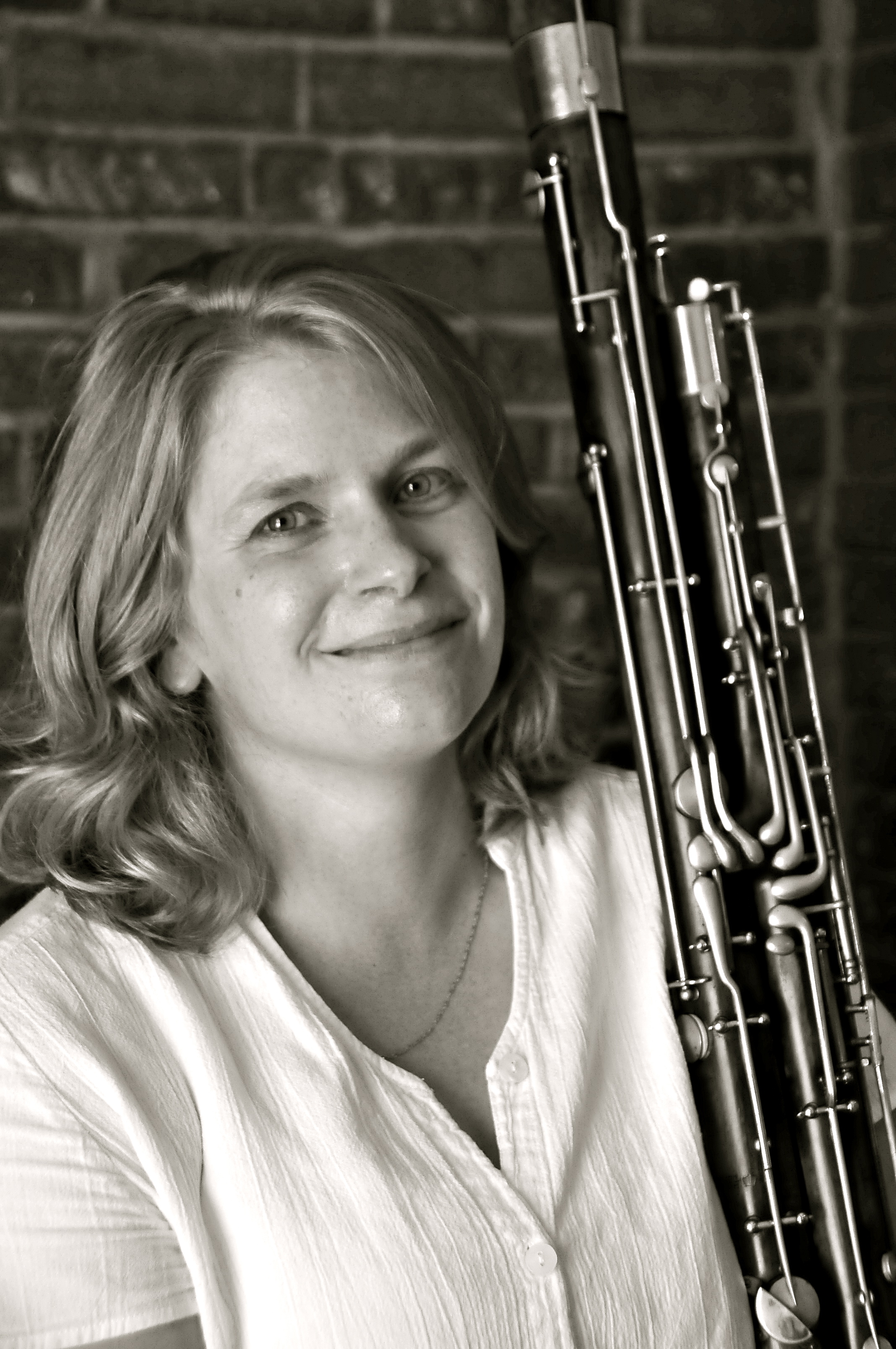Meet Melissa!
/Melissa is performing with Chamber Project for the first time this Saturday! She is a Core Member of Chamber Project, and brings a lot to the table! She writes about her instrument, her story, and gives a preview of the music we're performing on Saturday Greetings from the Bassoon section!
Being a woodwind player, and especially a bassoonist, I approach chamber music with two minds. On the one hand, I have some great repertoire, by great composers, that I love to play. But I also am extremely envious of string players and pianists and their seemingly endless supply of Beethoven Quartets, Mozart Sonatas, Bartok Quartets, and Shostakovich Quintets. The woodwind repertoire has so few works that I feel like are on that level, that some days I wish I had picked up the viola or the cello instead of the bassoon. That being said, I love my instrument, how it sounds (on good days at least), and I love playing chamber music, whether it’s by Walter Piston or by Mozart.
I switched to bassoon (from flute) as a freshman in high school, so almost as soon as I could figure out how to hold the thing I had teachers recruiting me for orchestras and chamber groups. Chamber music has been a part of my musical life from the very beginning. Chamber music is intimate, communicative, fun, conversational, challenging, and always different with different people. To be good at it, you have to be good at your instrument, good at accompanying, good at leading, and good with all kinds of personalities. I think most musicians think of it as the most fun you can have while playing your instrument.
I have played all the pieces on Saturday’s program at other points in my life (except the one work that has no bassoon part…) So in some ways this program has been a walk down memory lane, reminding me of places and people from my musical past. But I’ve never played these works with the ladies of Chamber Project, or in St. Louis before. The Piston trio (Three Pieces) is the work I have the most experience with. It was really fun to play it at the Very Open Rehearsal with Jen, Dana, and an audience. It’s a great work. Piston is a really smart composer. Each movement has a small kernel of an idea with 3 layers (one layer in each instrument). He develops the movement by playing with the layers, rearranging them, shifting them, and repeating them. Listen carefully to the first few measures of each movement, and you can unfold the rest of the piece from that first idea.
Charles Koechlin (1867-1950) is not a particularly well-known composer, although many of his works have finally been published in the last 20 years or so. He was a student of Faure. He was a big fan of Bach’s music, and you absolutely hear that influence in his Trio for Flute, Clarinet and Bassoon. Like the Piston, each movement is based on a small idea, but gets developed in a Baroque style rather than a more 20th Century style. (Interestingly, the works were written a year apart- Koechlin’s in 1924, and the Piston in 1925.) While the way he develops his ideas are old-fashioned, his harmony and use of instrumental color are all 20th Century, and reminiscent of Faure. The first and second movements of the Trio have a theme that gets passed around and is ever-present, while the other two voices add counterpoint- similar to a chaccone or use of a cantus firmus. The last movement is a fugue. (You can’t get much more Bach-like than that.) I am a giant fan of Koechlin’s, because his Bassoon Sonata is gorgeous, and probably my favorite solo work.
The first time I played the Poulenc Trio was in the spring of 1992, almost exactly 20 years ago. I’ve been practicing from the part that I used for that performance. (You should be impressed that I still have it, after all this time, and through the 7 moves to different cities I’ve made since then.) It’s comforting and horrifying to me that the passages I marked back then as needing “some extra attention” are exactly the same passages that need attention now. I’m telling myself that they don’t need as much attention now as they did then, but I’m not sure if that’s true. Some things are just difficult, no matter how experienced you are. I love this piece as much today as ever. It’s exuberant, highly influenced by the French cabaret music that Poulenc’s life was filled with, and so much fun to play. When Adrienne suggested substituting soprano sax for oboe, I was a little skeptical, but curious to hear how it would sound. At the risk of offending some oboists, I have to say that I think it’s a great substitution, and Adrienne is doing a great job. I think Poulenc would approve.
